Opening Day is Thursday at Kauffman Stadium. Minnesota Twins at 3:10.
The Royals are in first place in the Cactus League. The Cardinals are in first place in the Grapefruit League. I-70 World Series? Hope springs (training) eternal.
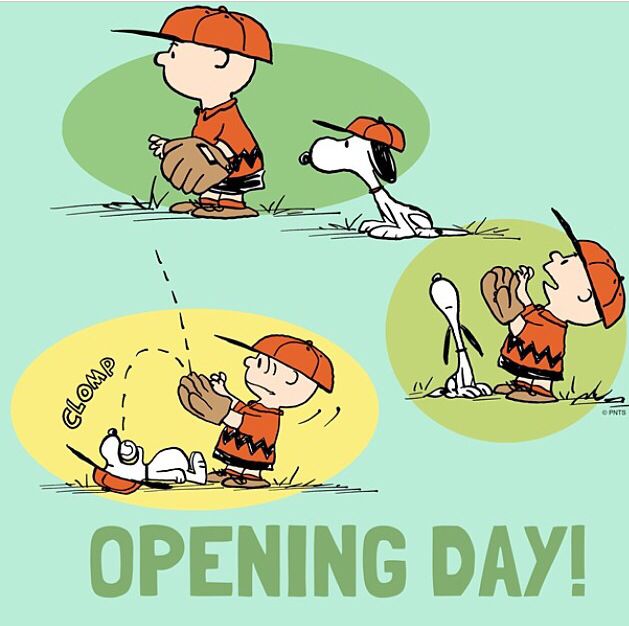
Baseball is in the midst of a triple boost of fan interest as we head into Opening Day this year.
Boost #1 – The New Rules: A major part of spring training press coverage has been on the new rules – pitch clock, shift restrictions and base size.
As the rules have been tested during spring training, I’m getting the sense that MLB and its fans are liking what they see. Especially knocking 25 minutes off the game time.
MLB has released a series of short promos with celebrities and players touting the new rules (click here). Example: Breaking Bad’s Bryan Cranston proclaiming “Get that shift…outta here!” and “It’s the best game in the world. Now, it’s even better.”

Not only should the games be better, but so will the variety of opponents. Because…
Boost #2 – The New and Improved Schedule: I love this.
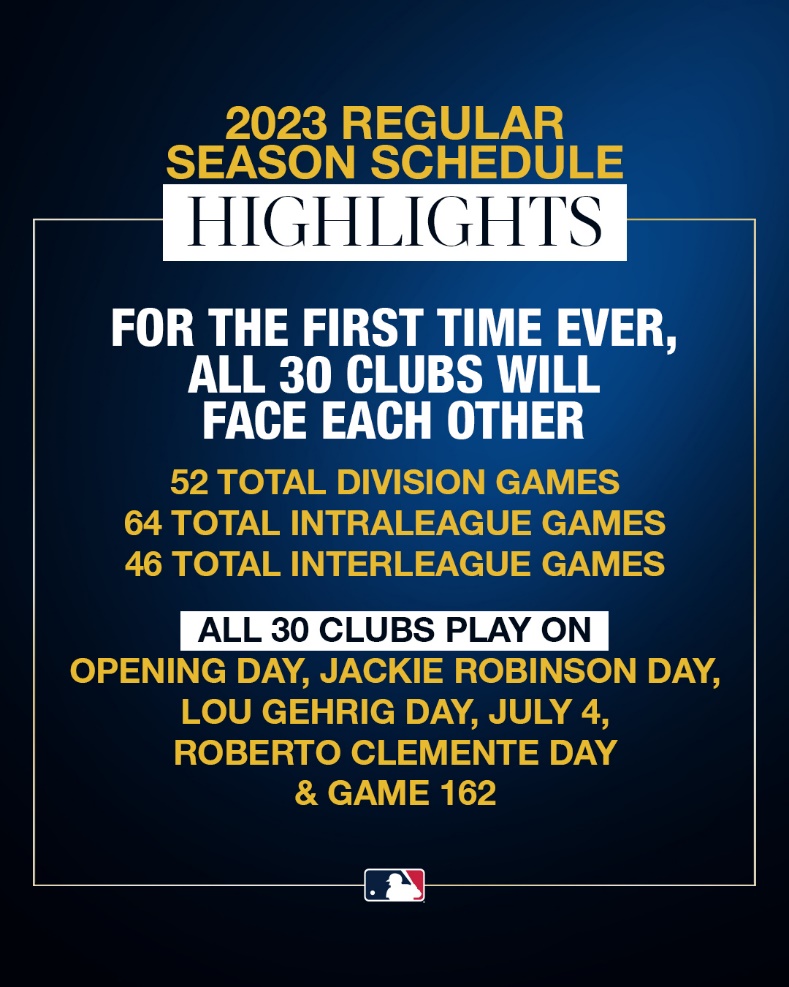
Here are the schedule changes from 2022 to 2023, using the Royals as a sample:
1. Division Games (Reduced from 72 to 52). The Royals will play each of their four AL Central rivals 13 times during the season (instead of 18). I look forward to fewer games with the Guardians, White Sox, Tigers and Twins.
2. Other American League Teams (Reduced from 66 to 64). Not a big change. Will still have a home and away series with each of the ten teams in the AL East and West.
3. National League Teams (Increased from 20 to 46). This is the big deal! The Royals will play all 15 NL teams this year. Four of the games will be with their “natural rival,” the St. Louis Cardinals (two home and two away). They will play a 3-game series with each of the other 14 NL teams. Half of these will be at home, the other half on the road. The home/away teams will be reversed the following year so all NL teams will be at the K over a two-year period.
I believe the opportunity to see more NL stars will boost stadium attendance and TV viewership. Smart move.
Boost #3 – The World Baseball Classic: During spring training, baseball fans were treated to a “world series” of games that made for an entertaining introduction to the 2023 season. The WBC started with teams playing for 20 countries – five each in Taichung (Taiwan), Tokyo, Phoenix and Miami. To get a feel for the international passion for the sport, check out these videos from WBC games in Taichung (click here for non-scalping chop) and Tokyo (click here for Ohtani homer).
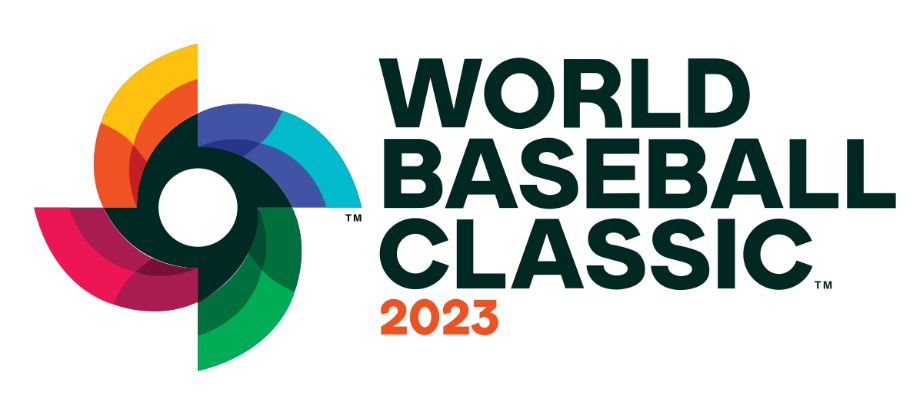
After a round robin series, two teams survived from each city, and those eight teams met in a single-elimination tournament. Quarterfinal playoffs were in Tokyo and Miami, and the “Final Four” met in Miami. This meant Miami was a host for all rounds of the tournament, an excellent choice since Miami is a Latino-majority city where Latino fans turned out in big numbers (six of the eight Latin American teams played in at least one round in Miami).
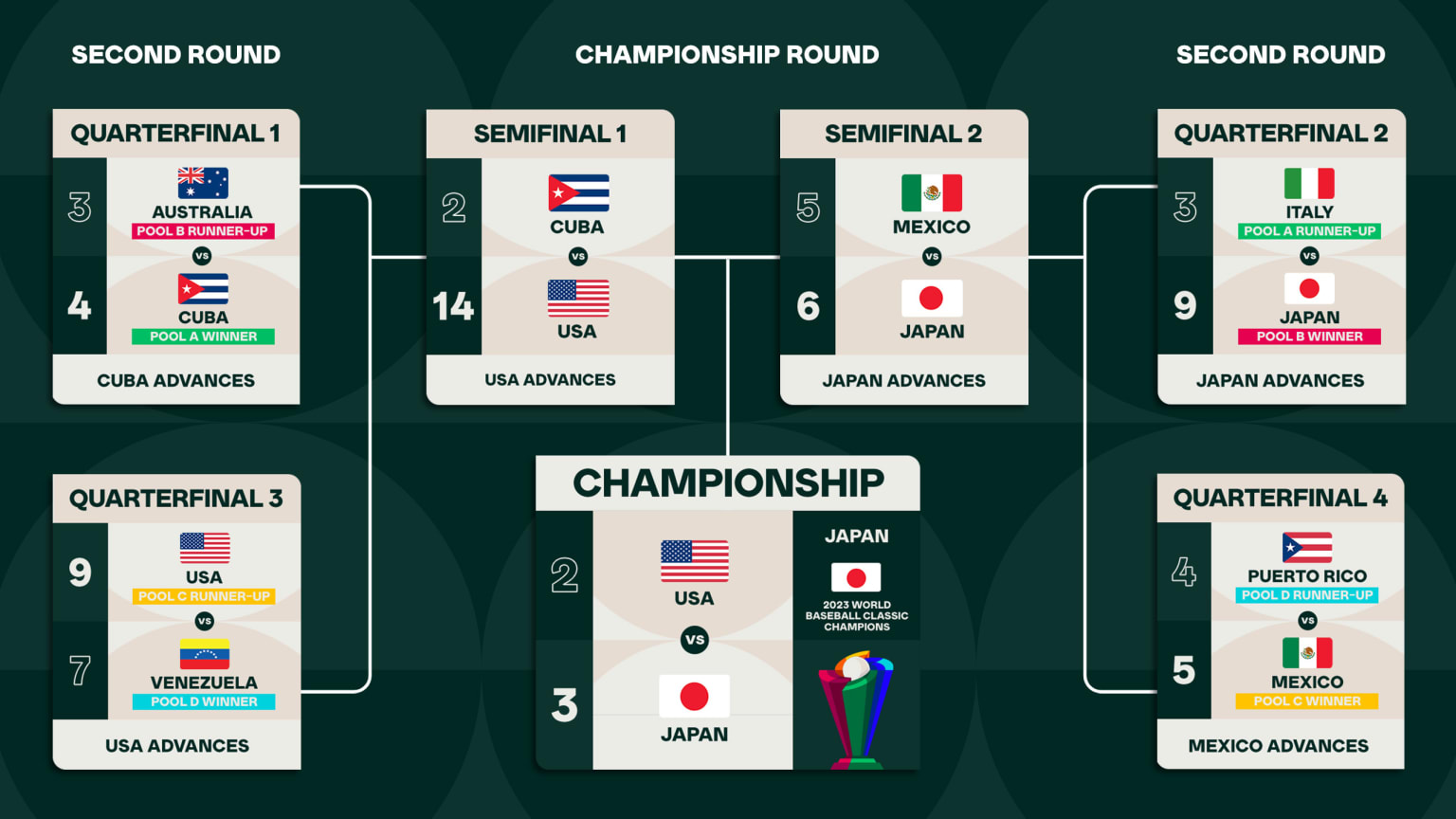
The attendance at the games and the TV ratings were all-time highs. The single-elimination format for the “Elite Eight” felt like a baseball version of March Madness. The atmosphere was electric. To give a flavor, here are some video highlights:
From the quarterfinals: The United States was on the verge of elimination, trailing Venezuela 7-5 in the 8th inning. Trey Turner came to the plate with the bases loaded. Grand slam! Click here. USA wins.
From the semifinals: Japan faced elimination, trailing Mexico 5-4 in the bottom of the 9th. With two men on, Munetaka Murakami (the “Japanese Aaron Judge”) stroked a double off the wall for a walk-off win. Click here for the Japanese broadcast. Mexico manager Benji Gil said, “Japan advances, but the world of baseball won tonight.” Indeed.
From the finals: The dream matchup. Angels teammates Shohei Ohtani (for Japan) and Mike Trout (for USA) carried the flags of their countries to lead the teams on to the field (click here). They would face each other again in the 9th inning.
Japan led 3-2 when Ohtani came in to pitch the 9th for Japan. He walked the first batter, Jeff McNeil, and the Royals Bobby Witt Jr. came in to pinch run. The next batter was Mookie Betts who hit into a double play. In a coincidence made in baseball heaven, up next was Mike Trout who worked the count to 3-2. Then, with a swing at a perfect slider…Mighty Casey struck out! It could not have been more dramatic. An international sensation. Click here for the Japanese broadcast.

Ohtani’s combination of batting and pitching stats made him the obvious MVP for the tournament. These three stats really stand out: Ohtani hit a ball harder than any other player in the tournament (118.7 mph), tied for fastest-thrown pitch (102 mph) and tied for hitting the longest home run (448 feet). Sho-Time!
Sportswriters were effusive in their praise of the WBC and the Hollywood ending. Joe Posnanski, “I’m never going to forget this.” Tyler Kepner (NYT), “The tournament, it is safe to say, is no longer taking off. It is already in orbit.” Ken Rosenthal (The Athletic), “It was Ali-Frazier in the batter’s box” (video clip of the six pitches). Tom Verducci (Sports Illustrated) borrowed from Shakespeare’s As You Like It to highlight Ohtani’s versatility:
All the world’s a stage,
And all the men and women merely players;
They have their exits and their entrances;
And one man in his time plays many parts.
The championship game drew 5.2 million USA viewers, one of the most-watched non-World Series games in recent history. But that was nothing compared to the staggering numbers in foreign markets. In Puerto Rico, 62% of the television-watching audience saw their game against the Dominican Republic. The TV audience in Japan for the Japan/Italy quarterfinal was 62.5 million (in a country of 125 million). Some context: The USA audience for the final game of last year’s World Series was 12.5 million. I have not yet seen a report on the Japanese audience for the championship game, but it will be huge even though the game starting time there was 8:00 on a weekday morning.
Below, fans rejoice in Tokyo with their special-edition newspapers.

Another form of rating the effect of the WBC is that Ohtani has jumped from 1.7 million Instagram followers before the WBC to three times that amount. The current standings for MLB players:
Shohei Ohtani – 5.2 million followers (and climbing)
Mike Trout – 2.1 million
Bryce Harper – 1.7 million
Aaron Judge – 1.6 million
Javier Baez – 1.5 million
Royals star in the WBC: Playing for Venezuela, Salvy Perez was the MVP of the 5-team first round in Miami. He was also named the catcher for the all-tournament team. Click here to see his 3-run shot (and his joyful celebration) against Puerto Rico.
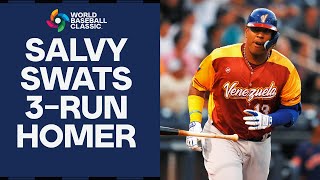
Babe Ruth and Shohei Ohtani: Fans are familiar with the comparisons of Babe Ruth and Shohei Ohtani. Both are known for superb hitting and pitching. Outside of the Negro Leagues, no other MLB player comes close to this dual success.
The two have something else in common. They are heroes in both Japan and the USA.
In November and December of 1934, Ruth and other American League all-stars (Lou Gehrig, Jimmy Foxx, etc.) participated in a 12-city barnstorming tour of Japan. More than a half million fans filled the streets of Tokyo to welcome the players. Although the Babe was near the end of his career, he still represented the pinnacle of baseball to the Japanese who called out “Banzai, banzai, Babe Ruth.”
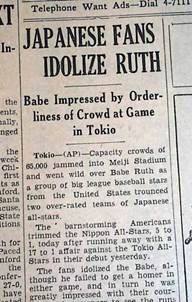
Diplomats hoped that the goodwill engendered by the tour would soften the tense relations between the countries. Although the tour was popular and drew big crowds, the goodwill was short lived. One hint might have been the one non-all-star on the roster, catcher Moe Berg. Speculation is that this was Berg’s first mission as a U.S. spy, as chronicled in the 1994 book, The Catcher Was a Spy.
Setting aside the politics, the tour was a big step for Japanese baseball. Baseball had been played in Japan for decades, but mostly at the amateur level. Teams formed from players in the America, National and Negro Leagues often barnstormed in Japan, increasing the popularity. The big change in 1934 was that the all-star team assembled to play the Babe stayed together and became the foundation for the first major league in Japan. Today, baseball is the most popular participatory and spectator sport in the country. All with a little help from Babe Ruth.
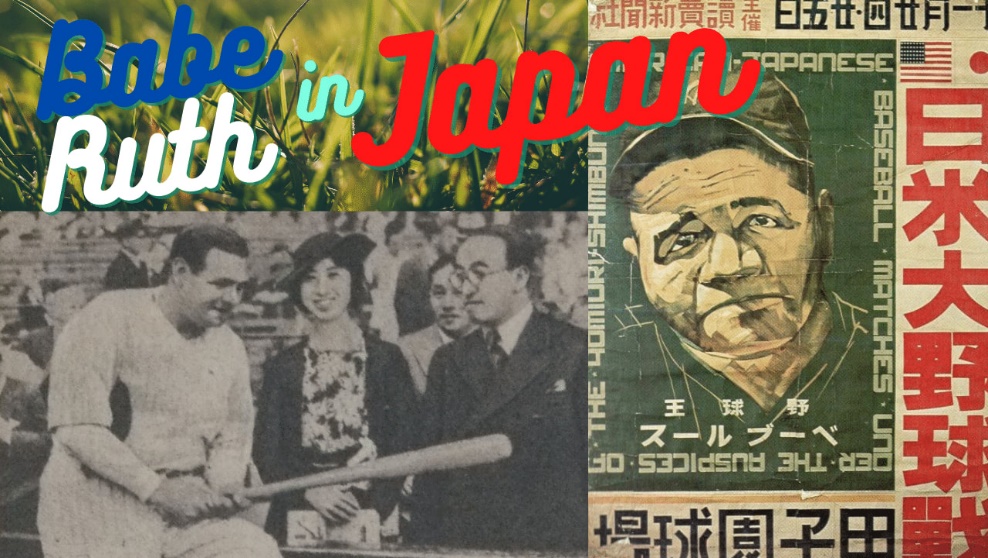
Fast forward to 2023. Japan’s Shohei Ohtani’s was the MVP of the WBC and is baseball’s top international hero.
To put this in historical perspective, I turn to New York Times columnist George Vecsey who has covered many World Series and World Cups. In a blog post last week, Vecsey wrote that his all-time favorite athlete, Babe Ruth, pitched and hit the Red Sox to a “world” championship in 1918. Now, 105 years later…
“I have seen Shohei Ohtani pitch and hit in the same game, for the World Baseball Classic, holding off Americans with skill and power and flair, just like the Babe…there is this versatile champion from Japan, thrilling people around the world…Ohtani has pushed the baseball tourney toward the grand tournament for the world’s most popular sport, soccer/football, the World Cup…Baseball still has a long way to go, around the world, but at least Ohtani has nudged his sport into the discussion of world events…An accomplishment I can legitimately label ‘Ruthian’.”
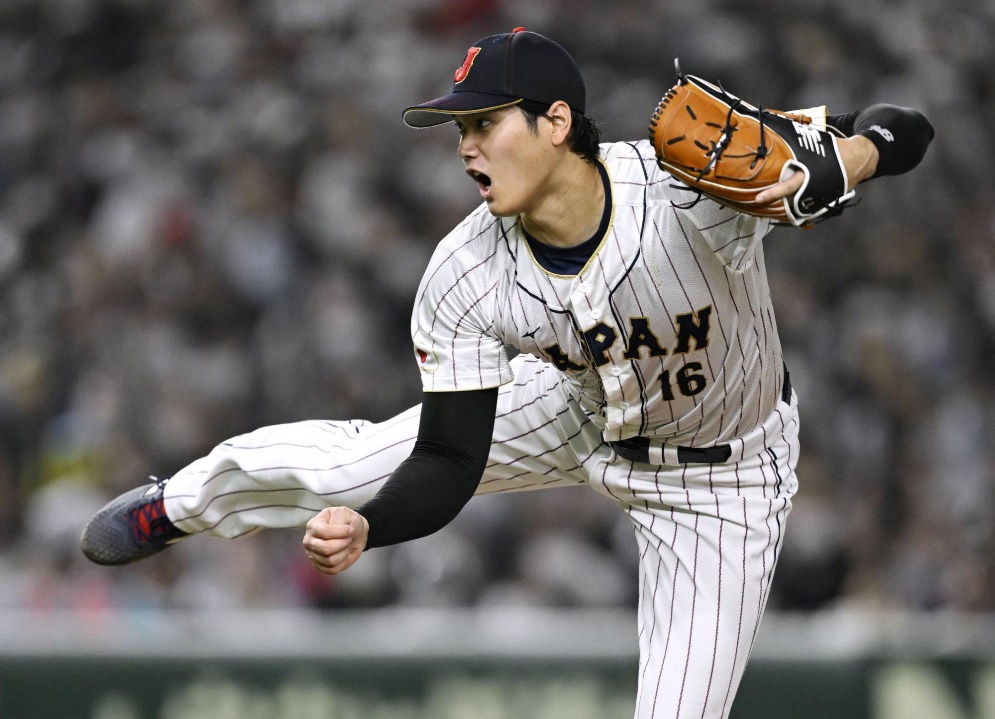
Ruth and Ohtani. Baseball ambassadors extraordinaire.
George Altman – Nonagenarian: Last week (on March 20), former Kansas City Monarch George Altman turned 90. Happy Birthday George!!
Altman is one of about 600 Americans who have played pro baseball in Japan since the first major league was formed there in 1934 (after the Babe Ruth tour). That league evolved into what is today’s Nippon Professional Baseball (NPB). Altman played in Japan from 1968 to 1975 and holds the American NPB records of 205 home runs and 656 RBIs.
I got a heads-up on Altman’s milestone birthday from Bill Wakefield who was a New York Mets teammate of Altman in 1964. One of the Mets beat writers that year was George Vecsey (above on Ruth/Ohtani) who was then writing for Newsday.
George Altman and Bill Wakefield have a few parallels.
In 1955, Altman and Wakefield were in Kansas City. Altman with the Kansas City Monarchs and Wakefield a freshman sports star at Pem-Day High School.
The 1955 Monarchs were managed by Buck O’Neil, and he and Altman were both signed by the Cubs for 1956 – Altman as a player and Buck as a scout. In 1962, the Cubs made Buck a coach, the first MLB African American to serve in that capacity. The big star for the Cubs in those days was Ernie Banks who had played for the Monarchs under Buck in the early 1950s. Below, George, Buck and Ernie, three former Monarchs sporting their Cubs uniforms.

In 1963, Altman and Wakefield were in the St. Louis Cardinals organization. Altman on the major league roster and Wakefield in the minors.
On November 4, 1963, Altman and Wakefield were traded by the Cardinals to the New York Mets for Roger Craig.
In 1964, Altman and Wakefield played the entire season with the Mets.
In 1965, Altman and Wakefield were in the Chicago Cubs organization. Altman on the major league roster and Wakefield in the minors.
After playing nine years in the majors, Altman left for Japan in 1968 to continue his baseball career. Wakefield retired from baseball after the 1966 season.
Below, a custom card celebrating the duo of Altman and Wakefield with the 1964 Mets.
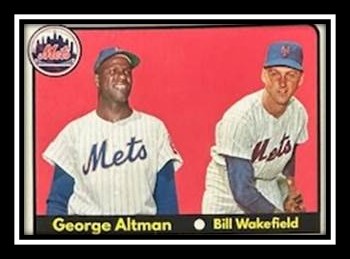
Altman may have played at more levels than any other player. From Little League, he went to college ball at Tennessee State. Then he played for the Army, the Monarchs, Cubs minor league teams and Panama and Cuba winter league teams. After his nine years in the majors with the Cubs, Cards and Mets, he played another eight years in Japan. Never tired of competing, he then played racket-ball for 20 years, followed by “less strenuous” horseshoes, winning tournaments and trophies in both endeavors.
All as told in his 2013 autobiography, George Altman: My Baseball Journey from the Negro Leagues to the Majors and Beyond.
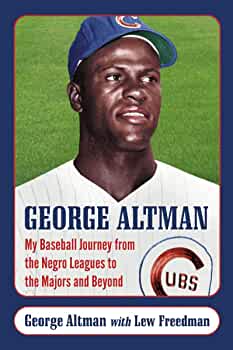
In his book, Altman speaks fondly of his time with the Monarchs, including the baseball education he received from manager Buck O’Neil. He also appreciated the honor of playing on “hallowed ground” when he shared the diamond with the legendary Satchel Paige who had returned to the barnstorming Monarchs in 1955. Below, from 2015, at the Negro Leagues Baseball Museum (from left, NLBM President Bob Kendrick, Luis Tiant, George Altman, Rickey Henderson and Ozzie Smith).
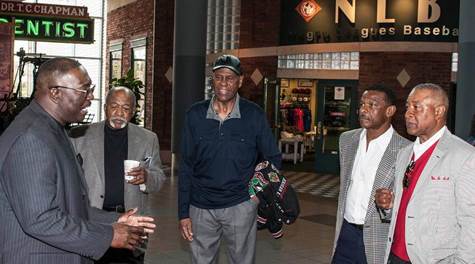
Lonnie’s Jukebox – 1964 Mets Edition: In honor of George Altman, Bill Wakefield and the other Mets of 1964, today’s selections will be rock ‘n’ roll from that year. Also a shout-out to the manager of that team, Casey Stengel, depicted below in a custom Mets card with fellow Kansas City native Bill Wakefield.
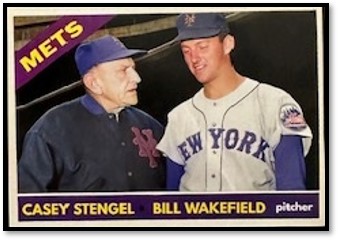
Beatlemania was the biggest music story in 1964.
“I Want To Hold Your Hand” by the Beatles. This record entered the charts on January 18, 1964, and moved to #1 for seven weeks. It was replaced at #1 by “She Loves You” for two weeks and then “Can’t Buy Me Love” for five weeks. That made for 14 consecutive weeks at #1 for the Beatles.
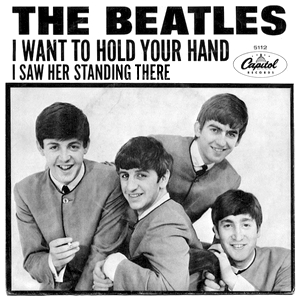
“Oh, Pretty Woman” by Roy Orbison. Three weeks at #1.
“Dancing in the Street” by Martha and the Vandellas. Peaked at #2. Marvin Gaye, a co-writer of the song, played the drums on the studio recording.
“Glad All Over” by the Dave Clark Five. Peaked at #6, becoming the first British Invasion hit other than the Beatles.
“My Boy Lollipop” by Millie Small. Peaked at #2. I picked this 1964 song because it was a favorite of my good friend Jim Fitzpatrick (RIP). He wrote an entertaining column on the record in his JimmyCsays blog (click here).
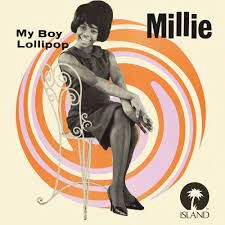
“Under the Boardwalk” by the Drifters. Peaked at #4. The opening lyrics reference their 1962 hit “Up on the Roof.”
“Chapel of Love” by the Dixie Cups. Three weeks at #1. Although it was the first record by the Dixie Cups, the record otherwise has an all-star pedigree. The song was written by the famed husband and wife team of Ellie Greenwich and Jeff Barry, with an assist from Phil Spector, and the record was co-produced by the legendary duo of Jerry Leiber and Mike Stoller.
“I Feel Fine” by the Beatles. This held down the #1 spot the last three weeks of 1964. It was the sixth #1 hit of the year for the Beatles. The two not previously named are “Love Me Do” and “A Hard Day’s Night.”
Music Baseball Trivia: “I Feel Fine” was knocked out of the #1 spot in the first week of 1965 by Petula Clark’s “Downtown” – as in KC’s downtown baseball stadium.